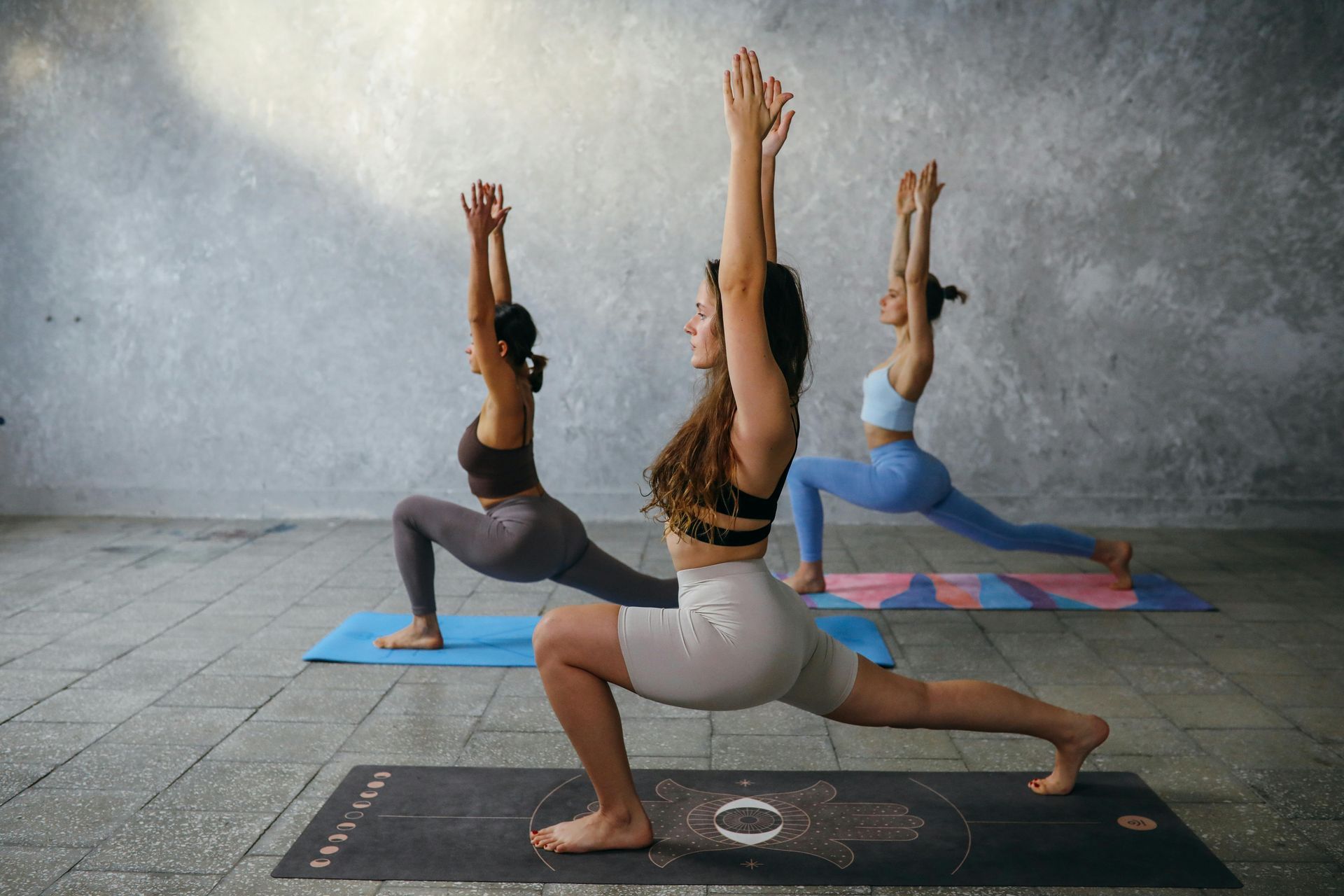Yoga vs. Pilates: Understanding the Differences and Choosing the Right Practice for You
Yoga vs. Pilates: Understanding the Differences and Choosing the Right Practice for You

In the realm of fitness and wellness, yoga and Pilates often stand out as popular choices, each with a dedicated following.
Both practices offer a myriad of benefits, but they are distinct in their origins, techniques, and objectives. Understanding these differences can help you determine which practice aligns best with your personal goals and needs.
Origins and Philosophies
Yoga
Yoga is an ancient practice that originated in India over 5,000 years ago. Rooted in spiritual traditions, yoga aims to unite the mind, body, and spirit. The word "yoga" itself means "union" in Sanskrit. Traditionally, yoga encompasses physical postures (asanas), breathing exercises (pranayama), and meditation, all aimed at achieving greater spiritual awareness and mental clarity.
Pilates
Pilates, on the other hand, is a more recent development, created by Joseph Pilates in the early 20th century. Originally called "Contrology," Pilates focuses on strengthening the body, particularly the core, to improve overall physical health and alignment. Unlike yoga, Pilates does not have a spiritual component but emphasises physical conditioning and rehabilitation.
Techniques and Movements
Yoga
Yoga incorporates a wide variety of poses that stretch and strengthen different parts of the body. These poses can range from gentle and restorative to vigorous and challenging. A typical yoga session might include standing poses, seated stretches, backbends, and inversions. Breathing and mindfulness are integral to yoga practice, with specific attention given to synchronising breath with movement.
Pilates
Pilates exercises are primarily focused on strengthening the core muscles, including the abdominals, lower back, hips, and buttocks. The movements are controlled, precise, and often involve small, repetitive motions. Pilates can be performed on a mat or using specialised equipment such as the Reformer, which uses springs and pulleys to provide resistance. Breathing in Pilates is also crucial but is usually coordinated with the effort exerted in each movement.
Benefits
Yoga
- Flexibility: Yoga poses are designed to stretch muscles and increase the range of motion in joints, enhancing overall flexibility.
- Stress Reduction: The meditative aspects of yoga help reduce stress and promote relaxation.
- Balance and Stability: Yoga improves balance and stability through poses that require focus and control.
- Mind-Body Connection: Yoga fosters a deep connection between the mind and body, promoting mindfulness and mental clarity.
Pilates
- Core Strength: Pilates is renowned for its ability to strengthen the core muscles, which support posture and overall body stability.
- Muscle Tone: The controlled movements in Pilates help tone and define muscles, especially in the abdominal area.
- Posture Improvement: Pilates emphasises alignment and balance, which can lead to better posture and reduced back pain.
- Rehabilitation: Pilates is often used in physical therapy to aid in the recovery from injuries, thanks to its low-impact nature and focus on controlled movements.
Choosing the Right Practice for You
When deciding between yoga and Pilates, consider your personal fitness goals and preferences.
Goals and Preferences
- Flexibility and Stress Relief: If your primary aim is to increase flexibility, reduce stress, and enhance your mind-body connection, yoga might be the better choice. Its emphasis on stretching, relaxation, and mindfulness can help you achieve these goals.
- Core Strength and Muscle Tone: If you’re looking to build core strength, improve posture, and tone your muscles, Pilates could be more suitable. Its focus on controlled, precise movements can lead to significant improvements in strength and muscle definition.
- Holistic Wellness: For those interested in a holistic approach that includes physical, mental, and spiritual wellness, yoga offers a comprehensive practice that addresses all these aspects.
- Rehabilitation and Low-Impact Exercise: If you have a history of injuries or require a low-impact form of exercise, Pilates provides a safe and effective way to build strength and stability without putting undue stress on your body.
Combining Both Practices
It’s also worth noting that many people find value in incorporating both yoga and Pilates into their fitness routines. The flexibility and relaxation benefits of yoga can complement the strength and stability gained from Pilates, creating a well-rounded approach to fitness and wellness.
Conclusion
Both yoga and Pilates offer unique benefits that can enhance your overall health and well-being. By understanding the differences between these practices, you can choose the one that best aligns with your personal goals. Whether you’re looking to increase flexibility, reduce stress, build core strength, or improve posture, there’s a practice that’s right for you. And remember, you don’t have to choose one over the other—combining yoga and Pilates can provide a balanced, comprehensive approach to fitness and wellness.







